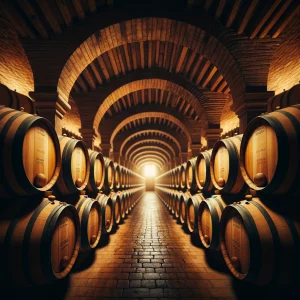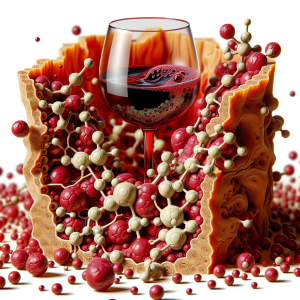For some time now, the vermouth culture has been revalued and is considered a very fashionable social event. In fact, at weekends the terraces are full of people enjoying vermouth, either red or white, in a wide-mouthed glass with a slice of orange or lemon, with or without soda, and accompanied by a bowl of olives… The resurgence of enjoying a vermouth is a fact, and the truth is that we completely agree, as it is delicious. In the following article we tell you all about this fantastic drink.
The origins of vermouth
Let’s talk briefly about the origins of vermouth before we get into how it is made. The history of vermouth dates back to the 15th century when, like many of our favourite drinks, it was made for medicinal purposes. It has historical ties to Italy, France, Spain and Germany and, as with many different subjects, discussing the origins of each style quickly becomes a heated conversation.
Also known as vermouth or vermouth, the drink’s first reference dates back to 1786, when Antonio Benedetto Carpano, created the first modern vermouth in Turin by mixing white wine, an infusion of dozens of herbs and Piedmont muscatel.
What is vermouth made of?
Many people are surprised to learn that vermouth is not a spirit, but a wine. In fact, the base is white wine, so we invite you to take a wine tasting to learn all the secrets. Vermouth wine is a fortified wine, which means that distillate is added to it to raise the alcohol level. It is infused or “flavoured” with herbs, spices and roots and, depending on the style, sweetened.
Vermouth must contain extracts from the Artemisia genus of plants to be classified as such. Originally wormwood was used, which is also an ingredient in absinthe, to which its hallucinogenic effects are mistakenly attributed. However, Artemisia contains hundreds of plants. Many of them, such as mugwort or mugwort, are used to add the characteristic bitter element to vermouth.
How is vermouth made?
The first thing to be clear about is that each master vermouth maker has their own formula for making vermouth, but the common ingredients are wine, botanical herbs, water, alcohol and sugar or caramel to achieve the right tone.
Once the herbs to be used have been selected, they are crushed and mixed with a hydroalcoholic solution for subsequent resting. This process, known as maceration, usually lasts a minimum of one month, but can be much longer. After maceration, the liquid extract obtained is filtered (pressed) and the white wine is added. This is the point at which some masters add caramel to achieve the classic golden hue and a sweeter taste. Finally, after checking that the mixture meets the standards, it is filtered again and cold stabilised before bottling.
Types of vermouth
Red vermouth
Also known as vermouth rosso in Italian, it is the most popular in our country. The most outstanding feature is the wormwood and the dehydrated botanicals that are added to it. The most common way to serve it is with a slice of orange, and its characteristic colour is due to the caramel, syrup or cinnamon that is added.
White vermouth
Undoubtedly the second main vermouth variety and the most consumed in the world. Citrus fruits and vanilla touches stand out, and although it is quite similar to dry vermouth, the aim here is to reduce bitterness.
Rosé vermouth
This is a much more modern variety of vermouth, with a much more intense aroma and hardly any bitterness. In this case, the base is white and red wine, and it becomes a real combo for preparing cocktails.
Dry vermouth
Finally, we find the dry vermouth, which stands out for being made from white wine, gentian, sage and coriander. We can say that, in this case, the flavour is rough and somewhat spicy, and it is undoubtedly the most bitter of the four types. It is widely used in cocktails to make mixed drinks.









